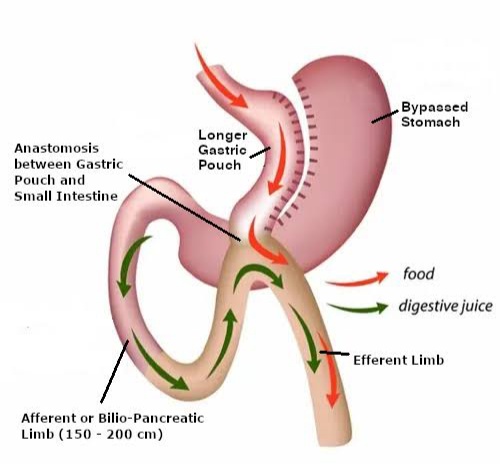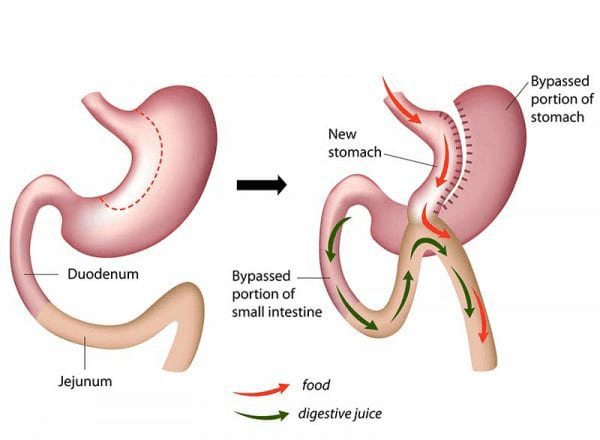Lapsurgery.com.au, Gastric Bypass Techniques Mini, Loop, Omega, Single, and One Anastomosis – Gastric bypass surgery has evolved over the years, offering diverse techniques to address weight management and related health issues. This article explores the characteristics and benefits of different gastric bypass methods, namely the Mini, Loop, Omega, Single Anastomosis, and One Anastomosis gastric bypass procedures.
Mini Gastric Bypass:

The Mini Gastric Bypass, also known as the One-Anastomosis Gastric Bypass (OAGB), is a minimally invasive procedure that involves creating a smaller stomach pouch and rerouting the small intestine to reduce food absorption. This technique is lauded for its simplicity and effectiveness in achieving significant weight loss with fewer complications compared to traditional methods.
Loop Gastric Bypass:
The Loop Gastric Bypass involves creating a loop in the small intestine and connecting it to a small stomach pouch. This approach aims to limit food intake and alter nutrient absorption. Loop gastric bypass surgery has gained attention for its potential to achieve weight loss while preserving the natural flow of digestive juices.
Omega Gastric Bypass:
The Omega Gastric Bypass is a modification of the traditional Roux-en-Y gastric bypass. It involves creating a specific omega-shaped configuration in the small intestine, optimizing the balance between restriction and malabsorption. This technique aims to enhance weight loss outcomes while minimizing the risk of nutritional deficiencies.
Single Anastomosis Gastric Bypass:
The Single Anastomosis Gastric Bypass is a simplified version of the traditional Roux-en-Y procedure. It involves a single connection between the stomach and small intestine, streamlining the surgical process. This technique is praised for its efficiency and reduced operating time, potentially leading to quicker recovery for patients.
One Anastomosis Gastric Bypass:
Similar to the Single Anastomosis Gastric Bypass, the One Anastomosis Gastric Bypass involves a single connection between the stomach and the small intestine. This technique is recognized for its simplicity, potential for weight loss, and low risk of complications. It offers an attractive option for those seeking effective and straightforward surgical solutions.
Closing
In the realm of gastric bypass surgery, various techniques such as Mini, Loop, Omega, Single Anastomosis, and One Anastomosis gastric bypass provide diverse options for individuals considering weight loss interventions. Each method comes with its own set of advantages and considerations, and consulting with healthcare professionals can help individuals make informed decisions based on their unique needs and health conditions.

